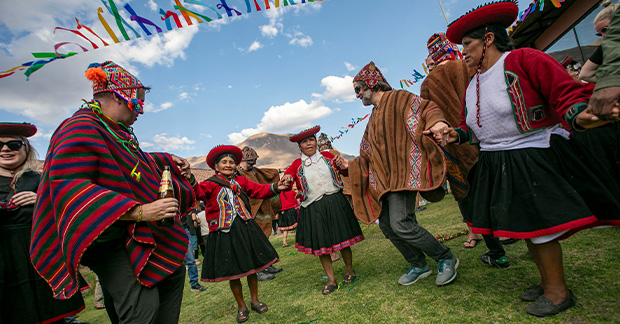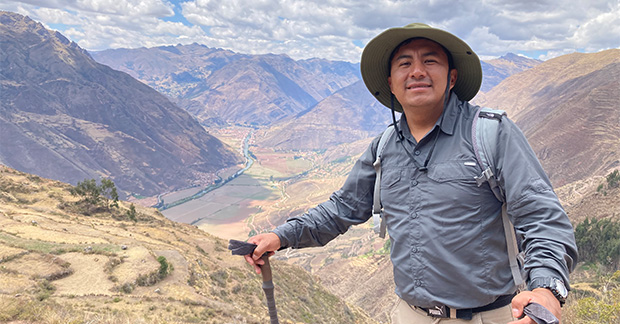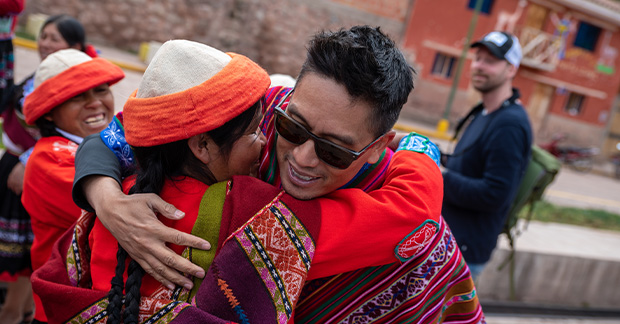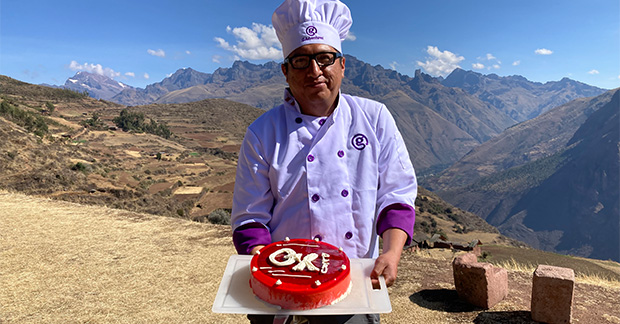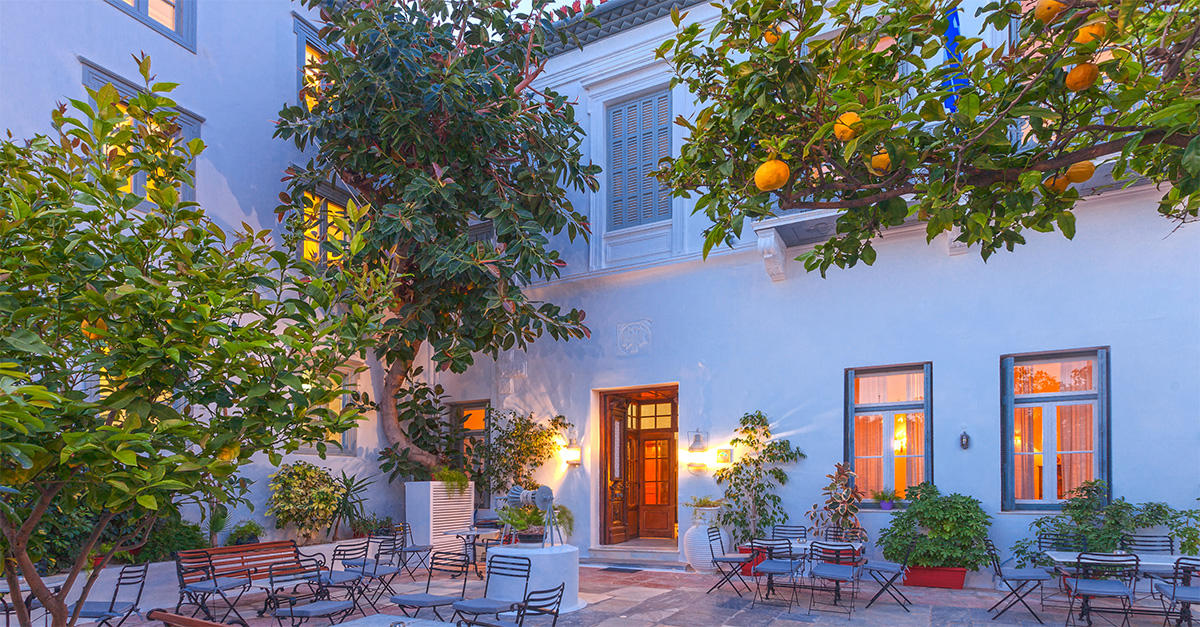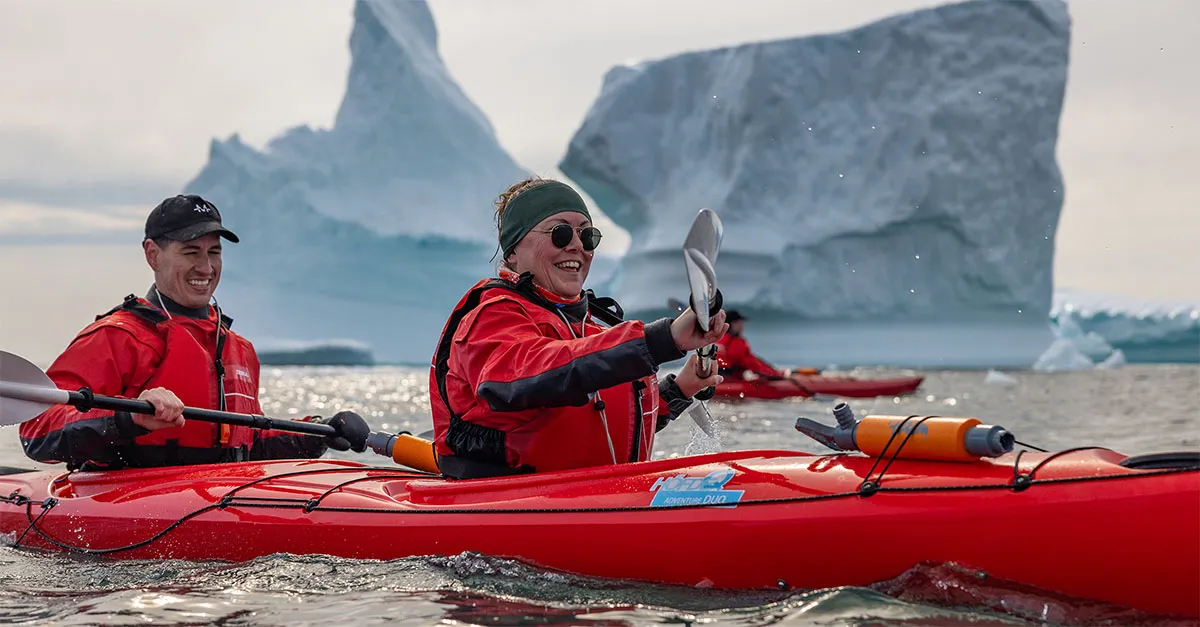Why community-led tours could be a force for change in Peru
Community-led tourism is one of the buzzwords in sustainable travel, but what does it mean in practice? Andrew McQuarrie joins G Adventures with a group of UK travel agents in Peru to find out more
Click here to download and save as a PDF
“I like to be here in my office,” says tour guide Jhon Chales Arque Arque, as he stands surveying one of the world’s most impressive mountain ranges. It’s 7.30am and breakfast is about to be served 4,000m above sea level in the heart of the Peruvian Andes.
Our campsite, overlooking the Sacred Valley and the Urubamba River, sits north of the Inca capital of Cusco, the city chosen by G Adventures to host its inaugural World Community Tourism Summit.
Arque Arque works with the tour operator as an ‘Inca Warrior’, meaning he shows off his breathtaking backyard to travellers from around the globe. “When they’re doing the hardest part of the Inca Trail, I need to say, ‘Come on, you can do it’,” says the 26-year-old.
“If you have a positive mindset, it helps a lot.” Another factor that helps a lot, as it turns out, is fuelling up with cake for breakfast, served by a chef who’s regarded as the best on the Inca Trail. Emerson Huaman could take his pick of the finest restaurants in Peru to work at, but he prefers to practise his craft at altitude. He holds aloft his torta helada for all to see – and it is a magnificent sight, with strawberry-flavoured jelly glistening atop a dense and delicious sponge.
Some time later, stomachs packed full of empanadas, cake and coffee, we waltz down the mountainside with a level of enthusiasm rarely displayed so early on a Monday morning.
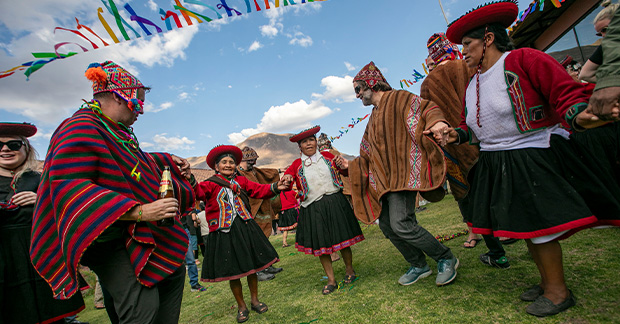
Working up an appetite
More food awaits at the foot of the valley, where we visit Parwa Community Restaurant in Huchuy Qosqo. Set up in 2014 with help from G Adventures’ non-profit partner, Planeterra, the restaurant has created jobs as cooks and serving staff for around 20 women from the local area. “There didn’t used to be any work for the women in this community – it was just men who worked,” says Helga Benito, who has been the restaurant’s manager since 2017.
The money generated by the enterprise goes towards helping the 70 to 80 families in the area, says Benito, with the community now enjoying easier access to drinking water, as well as medication, childcare, affordable internet and a range of schoolbooks. When I ask her how the residents feel about the arrival of tourists in the area, she says they are “very glad”. “It’s working very well for them and their families,” says Benito, who points to additional benefits beyond the wages.
Through the restaurant, women have learnt new cooking techniques while developing the ability to pull together and work as a team. After lunch, the local Cusqueña lager flows and a band plays in the courtyard while the waitresses tap their toes and twirl their colourful traditional dresses. When the party is over, Celia Chauca Santa Maria of the Huchuy Qosqo Association, the body that owns the restaurant, speaks about the group’s hopes for the future.
“We’re really happy that you’ve visited us and we’re really grateful that this project is still going on,” she says. “We’re going to go forward working together.”
It’s the embodiment of what G Adventures founder Bruce Poon Tip – who is here to see the project in action – says has been his mission over the past 33 years. He wants to show that tourism has the potential to be the “greatest means of wealth distribution the world has ever seen”, and Parwa Community Restaurant is a striking example of that idea in practice.
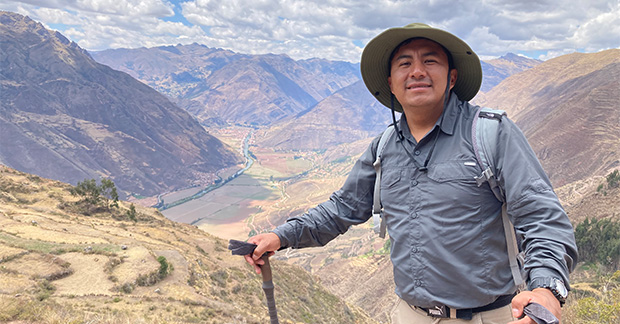
Community-led change
Peru is quite rightly celebrated for its cuisine, but when our visit to Ccaccaccollo Women’s Weaving Co-operative comes with an announcement that a platter of roasted guinea pigs is being served, I quickly find something else to occupy my attention. Instead of tucking into crispy rodents, I watch enrapt as grandmothers, mothers and children showcase techniques that have been passed down through the generations via countless hours of observation.
It’s a unique style of weaving you won’t learn in books, explains our guide, and offers an insight into the area’s traditional crafts. One of the weavers, 38-year-old Ayde Qquerar Torres, says every item sold helps the families improve their lives.
Before the co-operative was set up, many buildings in the area were unfinished and parents could not afford to send their children to school. Now, increasing numbers of young people are finishing school and going on to university.
Poon Tip is keenly aware of the changes, even since his last visit five years ago. “I get a bit emotional about it,” he says, sweeping an arm around the grounds and nodding to the new buildings. “This has a special place in my heart because of the women and how well they’ve taken to the coaching and running their business.”
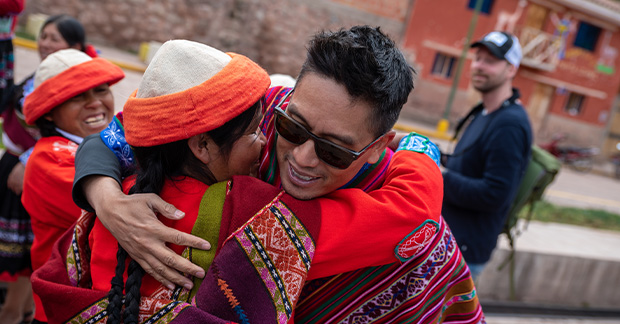
The Inca Trail and Machu Picchu
It might be cheating to swap the four-day Inca Trail hike to Machu Picchu for a journey by train and bus, but the hair-raising ascent feels every bit as heroic as getting there on foot. As the bus climbs higher and higher, twisting round the mist-shrouded mountains, we become increasingly convinced we will tumble to an extraordinarily scenic demise – so by the time the famous citadel is within sight, the views have taken on a deeper significance.
“Sixty per cent of the time it’s cloudy up here, so you can’t see anything,” says guide Leo Ccoyo, who animatedly explains the history of the ‘Lost City of the Incas’. He should know, having had a brief stint as a porter – carrying up to 40kg along the Inca Trail, though a new rule now enforces a maximum of 20kg – followed by a decade as a freelance tour guide, including eight years with G Adventures.
“Being in this job has changed my life,” says the 38-year-old, who comes from Pisac in the Sacred Valley. “You meet people from different countries and cultures. We’re passionate about our culture and want to share it.” The Sacred Valley region is a treasure trove for history buffs and hikers alike – but as these enthusiastic guides and enterprising projects attest, it’s also a model for the power of tourism to have a positive impact on the places and people we encounter along the way.
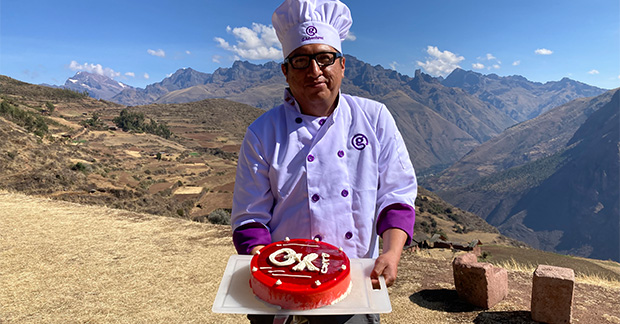
Ask the expert

Brian Young, managing director, EMEA, G Adventures
“For travel agents, it’s not just about selling an amazing tour, it’s the impact that amazing tour makes. That’s what differentiates us from other companies and that’s what we would like travel agents to understand and be able to explain to customers.”
Selling tips

Sherwin Arends, touring product and commercial manager, Incredible Journeys
? Visit the G Adventures and Planeterra community projects to get to know local communities, traditions and customs.
? Remember to bring your passport with you to Machu Picchu because you will need it to enter the site.
? Spend at least five days in the Sacred Valley area to enjoy the beautiful scenery and varied activities.

Michelle Hyde, manager, Hays Travel in Lowestoft, Suffolk
? Match the right tour to the right traveller – there’s a tour itinerary to suit everyone.
? The local CEOs – aka ‘chief experience officers’ – are the best tour managers and guides I’ve ever come across.
? For every day you travel with G Adventures, the operator will grow a tree on your behalf in communities affected by climate change
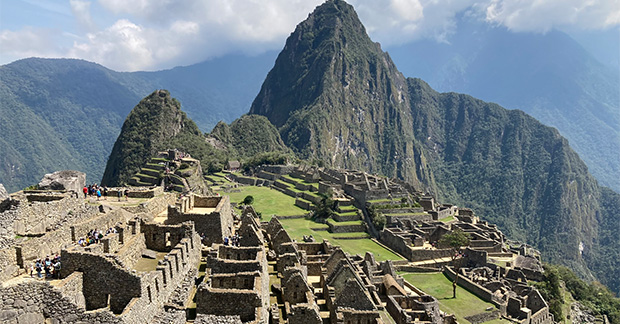
Book it
G Adventures offers an eight-day Machu Picchu Adventure from £1,319 (excluding flights) featuring highlights around Cusco and the Sacred Valley, including a scenic train ride to Machu Picchu.
gadventures.com
PICTURES: Andrew McQuarrie; G Adventures
Read more
x.travelweekly.co.uk/destinations/how-to-sell-amazon-cruises" target="_blank">How to sell Amazon cruises
x.travelweekly.co.uk/destinations/ask-the-operator-rail-and-sail" target="_blank">Ask the operator: Rail and sail
x.travelweekly.co.uk/destinations/discover-the-lesser-known-north-of-peru" target="_blank">Discover the lesser-known north of Peru

